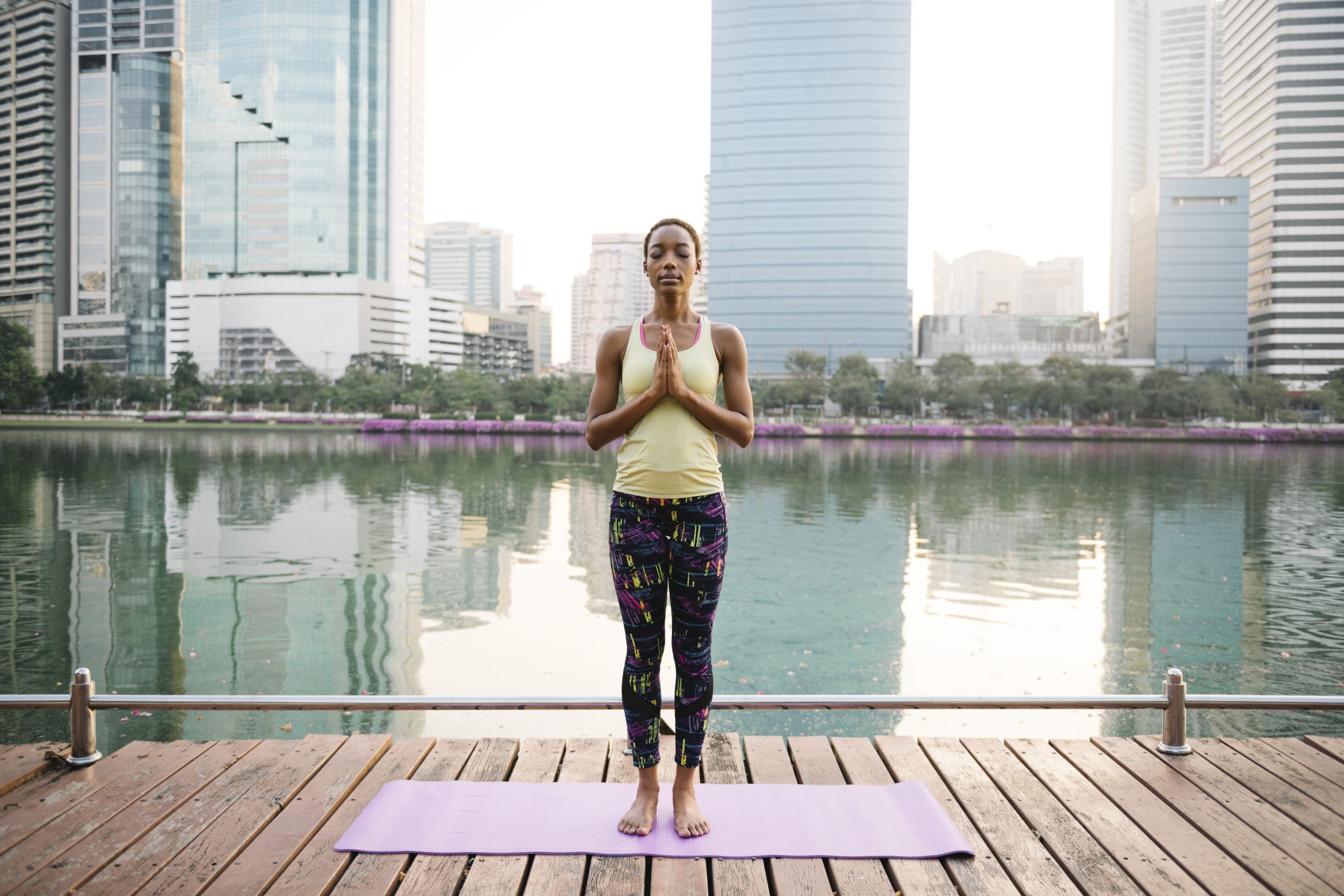Stress is a common problem in today’s fast-paced world. It can affect our mental and physical health, as well as our relationships and work. Mindfulness and meditation have been proven to be effective in reducing stress and promoting relaxation.
If you’re new to mindfulness and meditation, it can be overwhelming to know where to start. But don’t worry, we’ve got you covered. In this article, we’ll be sharing the top 5 mindfulness and meditation techniques for stress relief. Whether you’re looking to reduce anxiety, improve your sleep, or simply find a moment of calm in your busy day, these techniques can help you achieve your goals.
Top 5 Mindfulness and Meditation Techniques for Stress Relief
If you are looking for ways to manage stress and improve your overall well-being, practicing mindfulness and meditation techniques could be the answer. In this article, we will explore the top 5 mindfulness and meditation techniques that can help you find peace and calm in your busy life.
1. Deep Breathing
Deep breathing is a simple yet effective mindfulness technique that can work wonders for stress relief and anxiety management. Shallow breathing or chest breathing is often associated with anxiety and stress, which can lead to a feeling of being on edge or in constant fight or flight mode. Deep breathing, on the other hand, involves taking slow, deep breaths, allowing the inhale and exhale to fill the lungs completely. This type of breathing can be achieved by focusing on the breath, slowing it down and taking full breaths from deep in the diaphragm.
The steps involved in deep breathing as a mindfulness practice involve inhaling deeply and slowly through the nose, feeling the breath filling up the belly and chest, holding the breath for a few seconds, and then slowly exhaling through the mouth. As you exhale, you may feel the tension leaving your body, and with each inhale, it is important to focus on the breath and clear your mind of any distractions. Clearing your mind and focusing entirely on your breath during deep breathing helps increase awareness, reduce mental noise and promote relaxation.
Deep breathing can be incorporated into daily routines with ease, and it is an effective way to relieve stress and anxiety. Taking a few minutes for deep breathing each day can help calm the mind and regulate the breathing cycle. For example, you can set aside a few minutes each morning or evening to practice deep breathing or incorporate deep breathing exercises into other activities such as stretching or yoga. With daily practice, deep breathing can help to create a sense of calm and wellbeing, and can improve overall mental health.
2. Body Scan Meditation
Body Scan Meditation is a mindfulness technique that is commonly used to relieve stress and anxiety. It involves paying attention to various body parts and sensations while lying down or sitting comfortably. This technique helps to increase awareness of physical sensations, allowing individuals to identify tension and release it through relaxation and visualization techniques.
The main goal of Body Scan Meditation is to increase body awareness, allowing individuals to recognize the physical signals of stress and anxiety in their body. This technique helps to reduce the impact of stress on the body, leading to improved mental health and quality of life.
To begin the practice of Body Scan Meditation, it is important to find a quiet and comfortable space where you can lie down or sit comfortably. Close your eyes and take a few deep breaths to help you relax and transition into a more meditative state.
Next, focus on each body part from head to toe or vice versa, paying attention to physical sensations such as tension or discomfort. As you scan each body part, visualize any tension or discomfort being released with each exhale, allowing you to relax fully.
Throughout the exercise, it is important to breathe deeply and fully, allowing your breath to guide you through the meditation. By focusing on each breath, you can bring yourself into the present moment and release any stress or anxiety that you may be holding onto.
Body Scan Meditation is an effective technique to relieve stress and anxiety, allowing you to become more attuned to your body and increase self-awareness. By practicing this technique regularly, you can learn to identify the physical signals of stress and anxiety and release tension before it has a chance to impact your mental health and quality of life.
3. Mantra Meditation
Mantra meditation is a powerful and ancient technique that has been used for centuries to quiet the mind and reduce stress. Its benefits are numerous, including enhanced focus, relaxation, and mental clarity.
Unlike other forms of meditation that focus on breathing or body awareness, mantra meditation involves the repetition of a word, phrase, or sound, known as a mantra. This practice helps to calm and focus the mind by providing a focal point for concentration, similar to the way a candle flame or sound may be used in other forms of meditation.
Mantras can be derived from various traditions, including Sanskrit, Buddhist, or even personal affirmations. Some common mantras include “Om”, “So Hum”, and “Om Namah Shivaya”. It’s important to choose a mantra that resonates with you personally, as this will make the practice more effective.
To begin a mantra meditation practice, find a quiet and comfortable space where you can sit with your back straight and eyes closed. Take a few deep breaths to relax and focus your mind. Begin to silently repeat your chosen mantra in your mind, focusing on its sound and vibration.
As thoughts arise, simply acknowledge them and let them go without judgement, returning to your mantra. Consistency is key, and practicing for even just a few minutes a day can have a positive impact on reducing stress and improving focus.
4. Loving-Kindness Meditation (Metta)
Loving-Kindness Meditation, also known as Metta Meditation, is a mindfulness practice that has been gaining popularity in recent years due to its numerous benefits for reducing stress and improving emotional well-being. This meditation technique involves extending feelings of love, kindness, and compassion towards oneself, loved ones, acquaintances, and even difficult or challenging individuals.
The basic structure of Loving-Kindness Meditation involves finding a quiet and comfortable space, sitting with your back straight, and closing your eyes. Begin by bringing to mind someone you love or cherish, and silently recite a series of phrases such as “May you be happy, may you be healthy, may you be safe, may you be at ease.” Repeat these phrases several times, focusing on the feelings of warmth and love that arise in your heart.
As you become more comfortable with the practice, you can gradually extend these feelings of loving-kindness towards others, including acquaintances, strangers, and even difficult individuals. The goal is to cultivate a sense of universal love and compassion towards all beings.
Scientific research indicates that Loving-Kindness Meditation can have numerous benefits for our emotional well-being. In particular, studies have shown that regular practice of this technique can improve emotional regulation, reduce symptoms of anxiety and depression, and improve our overall sense of well-being. Furthermore, it has been shown to promote feelings of positivity and loving-kindness towards oneself and others.
This meditation technique can be particularly useful for those who struggle with negative self-talk and internalized negative emotions. Practicing Loving-Kindness Meditation can help shift our perspective towards a more positive outlook on life, and help us cultivate a deeper sense of appreciation and love towards ourselves and others.
If you’re interested in starting a Loving-Kindness Meditation practice, it’s important to start slowly and gradually build up your practice over time. Begin with just a few minutes a day, and gradually increase the amount of time you spend in each session. It’s also important to find a quiet and comfortable space where you can practice without distractions.
5. Progressive Muscle Relaxation Meditation
This technique involves systematically tensing and relaxing different muscle groups in your body in order to achieve a deep state of calm and relaxation. By consciously tensing and releasing each muscle group one at a time, you become more aware of the sensations in your body and can more easily release any built-up tension.
To begin, find a quiet and comfortable space where you can lie down or sit comfortably. It’s helpful to wear loose, comfortable clothing and remove your shoes. Once you’re settled, take a few deep breaths and begin to consciously relax your body.
Now, as you take another deep breath, begin by clenching your fists tightly, feeling the tension in your hands and forearms. Hold the tension for a few moments before releasing, and notice the sensations of relaxation that come with releasing the tension. Take a few deep breaths and focus on the feeling of relaxation spreading through your hands and arms.
Next, move on to your face and neck. Scrunch up your face and neck muscles and hold for a few moments before releasing. Once again, take a deep breath and focus on the sensation of relaxation spreading through your face and neck.
Continue this pattern, moving on to your shoulders, arms, chest, stomach, back, hips, thighs, calves, and feet. For each muscle group, tense the area, hold for a few moments, and release, focusing on the sensation of relaxation that follows.
As you become more comfortable with this practice, you can begin to envision the tension you’re holding in each muscle group as a color or shape, and release it as you let go of the tension. You can also add visualization or affirmations to enhance the relaxation experience.

Conclusion
In conclusion, mindfulness and meditation are powerful tools for managing stress and promoting overall well-being. By incorporating these techniques into your daily routine, you can develop a deeper sense of self-awareness, cultivate a more positive outlook on life, and improve your ability to handle challenging situations. Whether you prefer guided meditations, breathing exercises, or simply taking a few moments to be present in the moment, there are countless ways to practice mindfulness and reap the benefits. So why not give it a try and see how it can transform your life?

